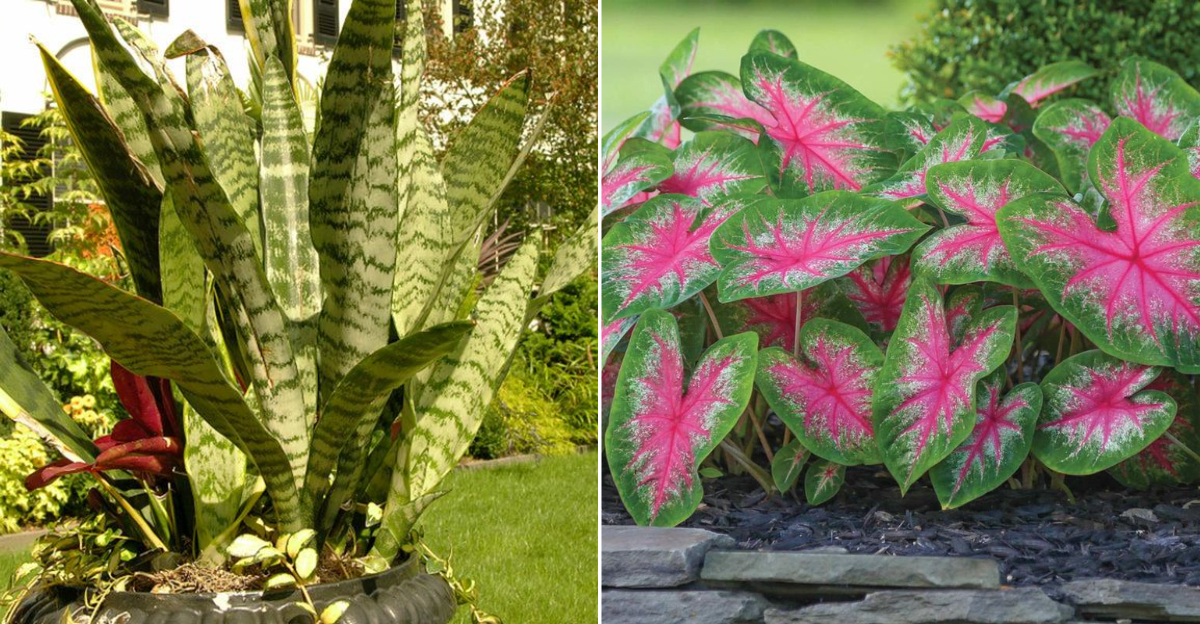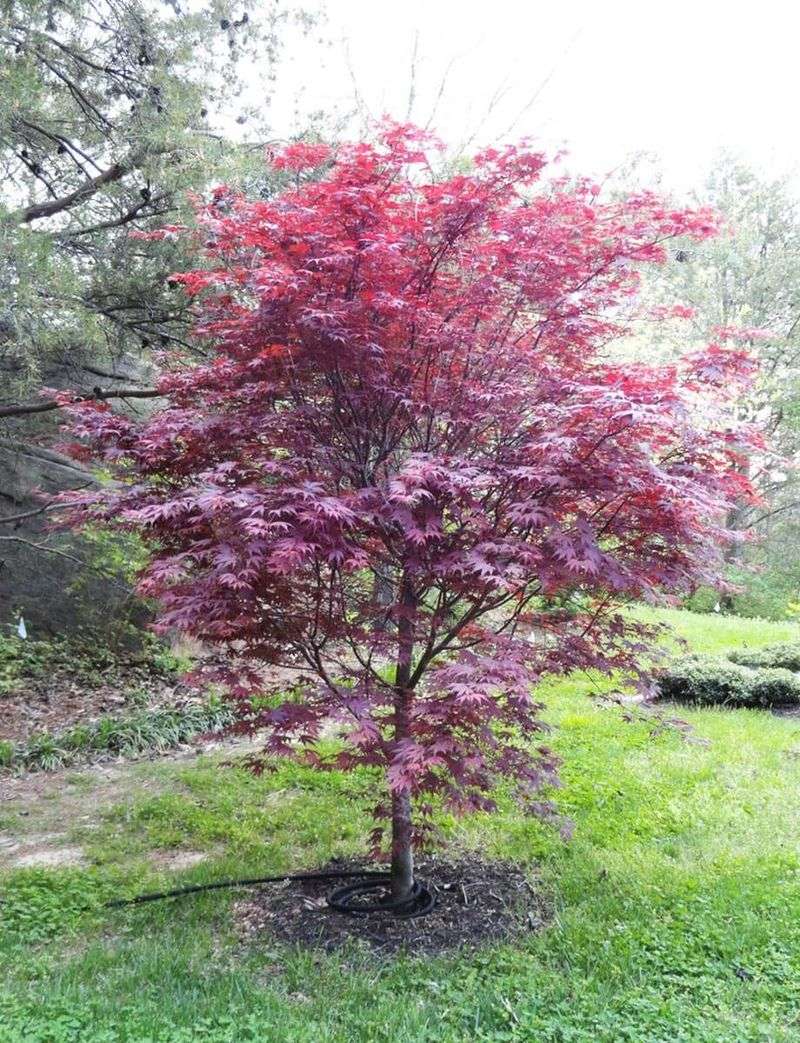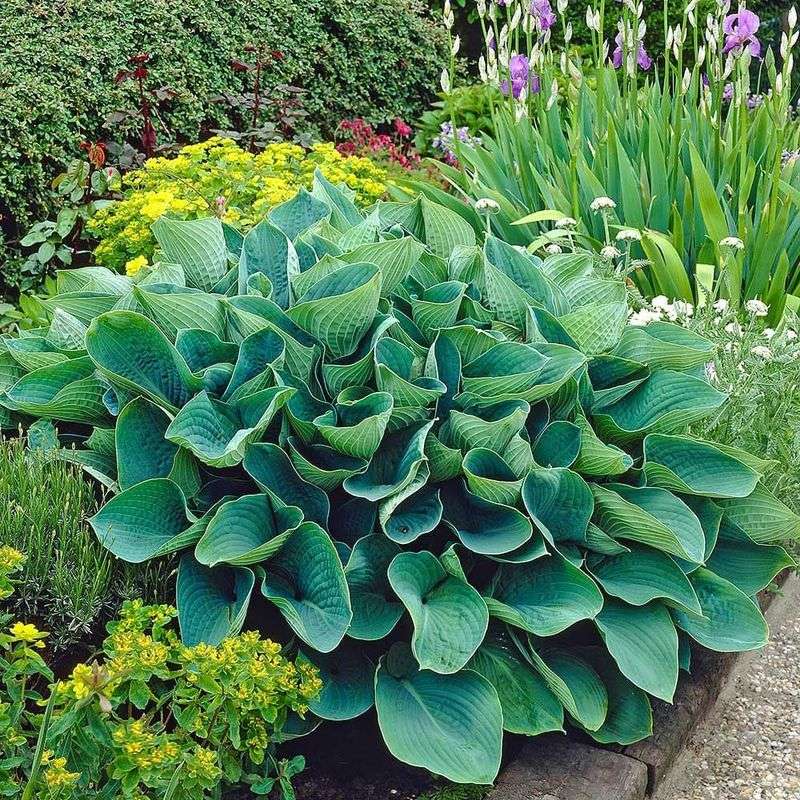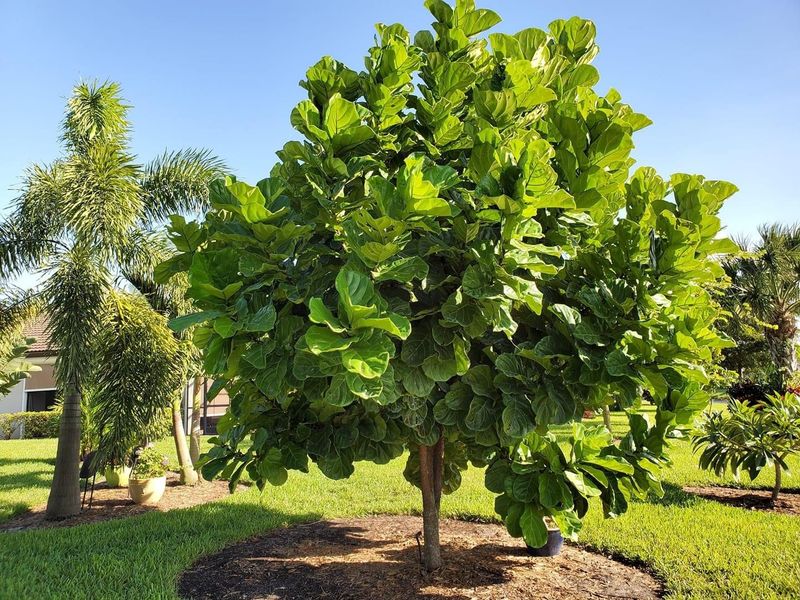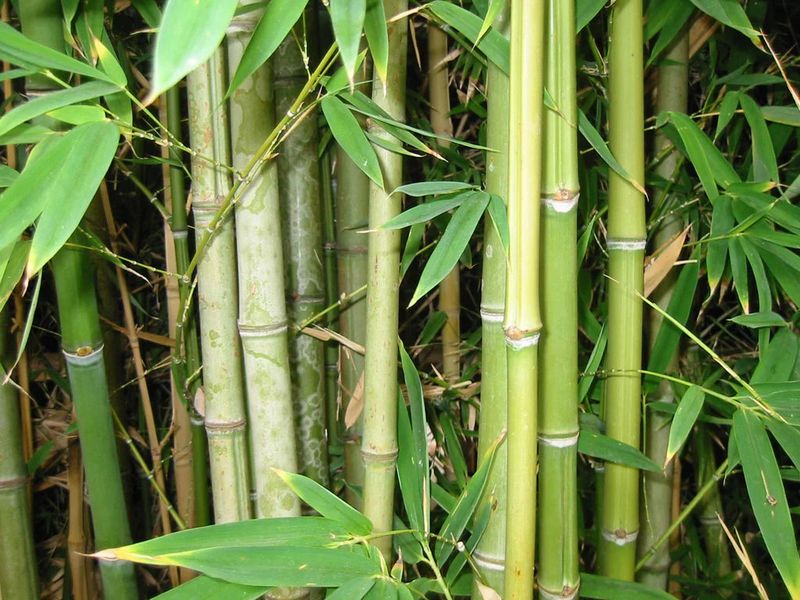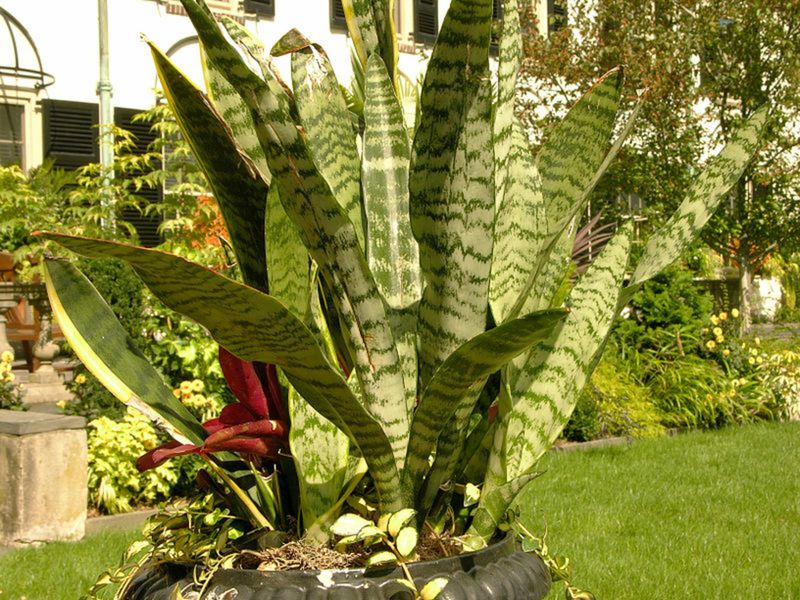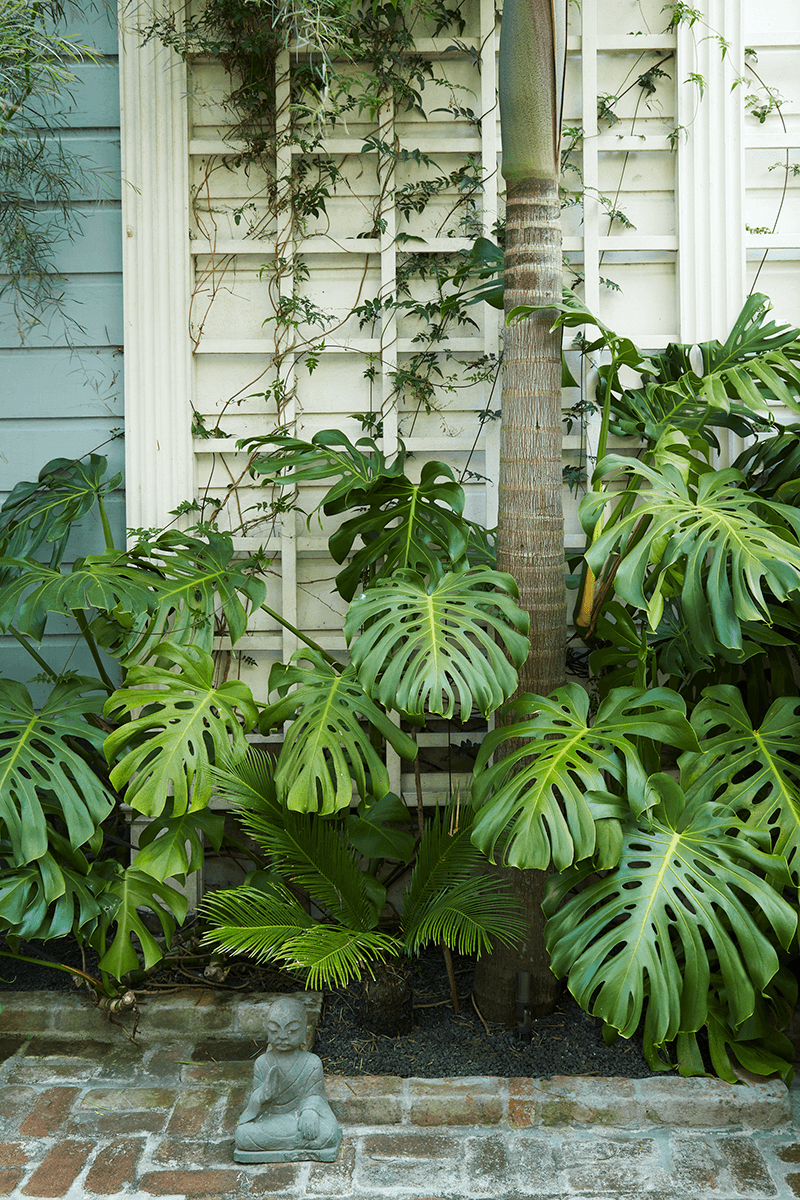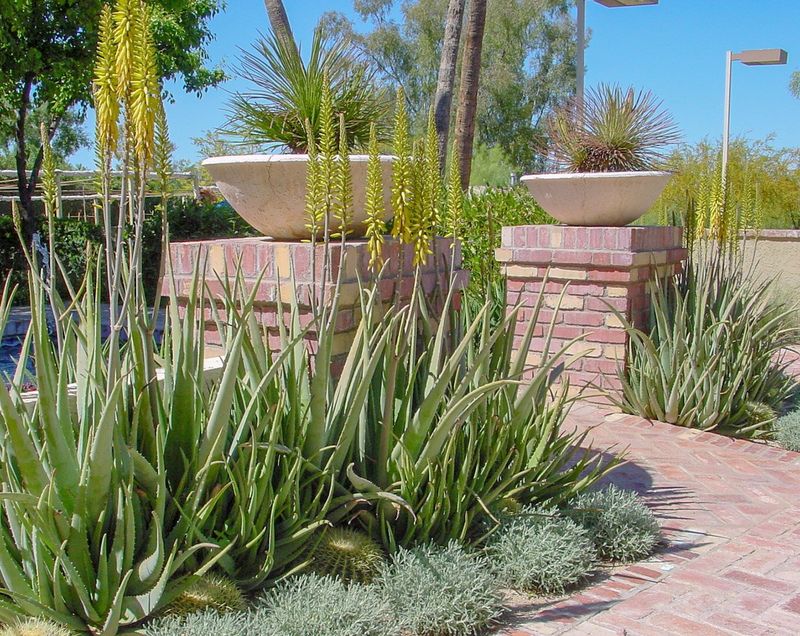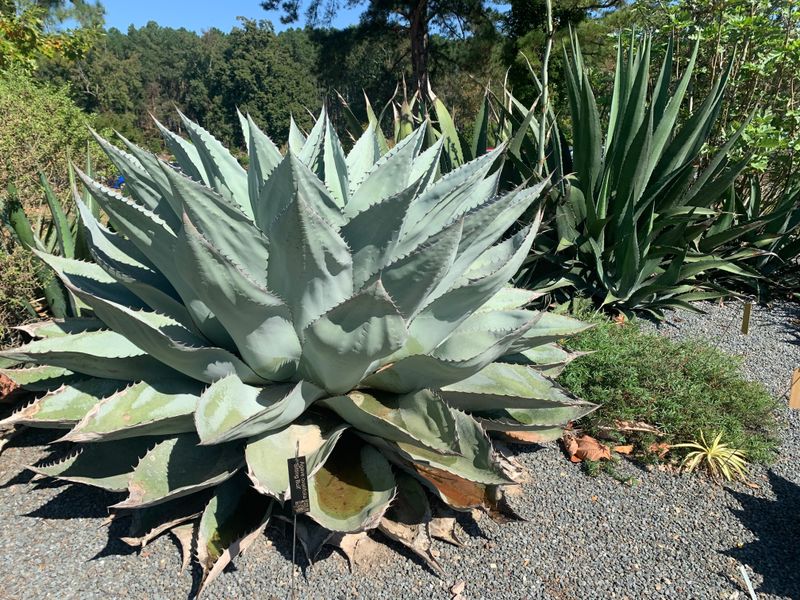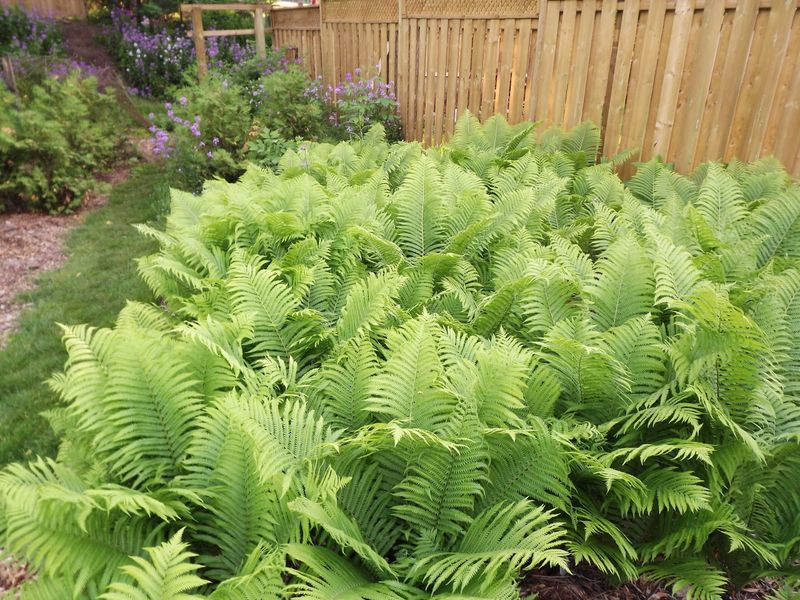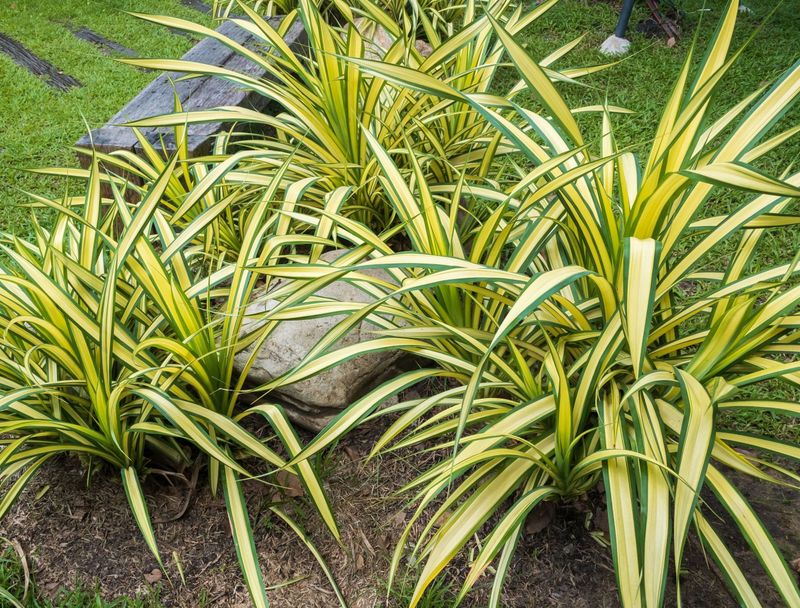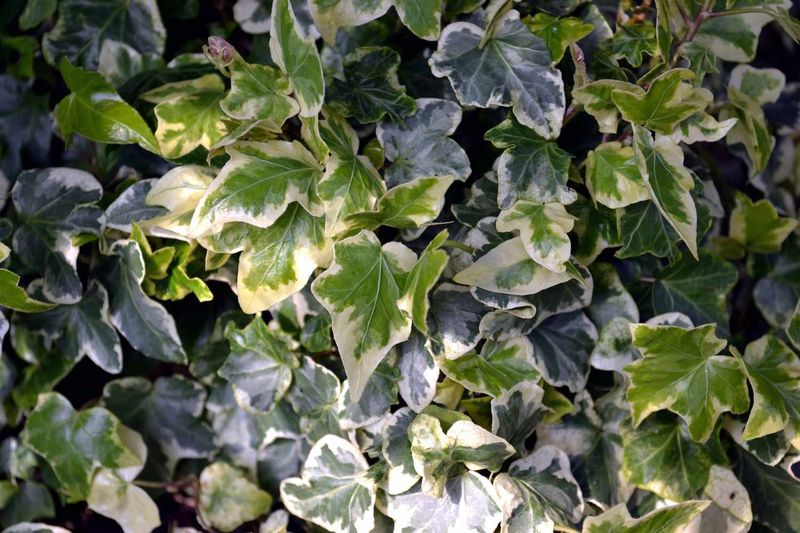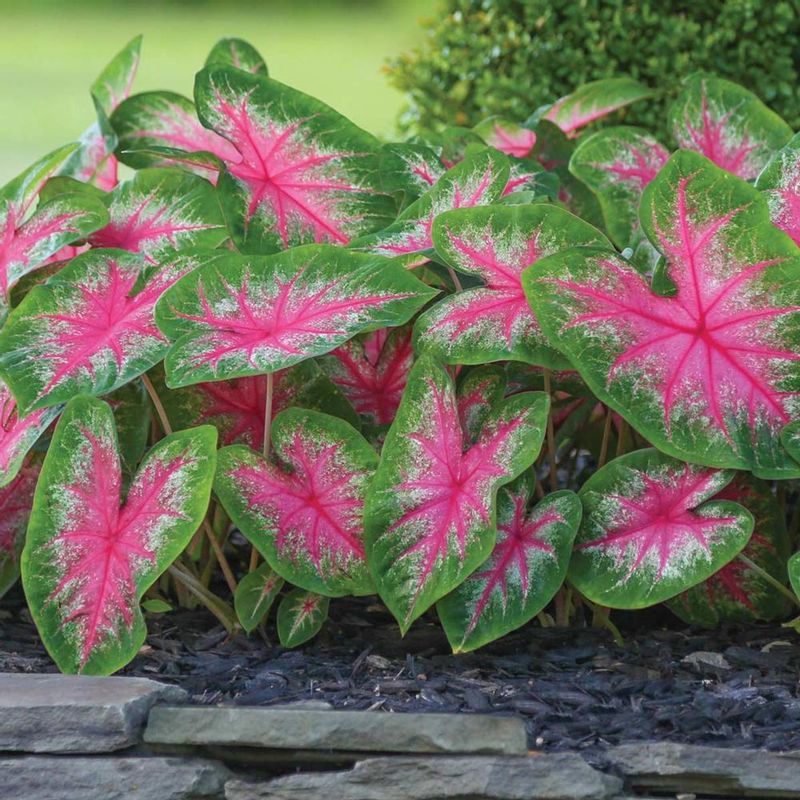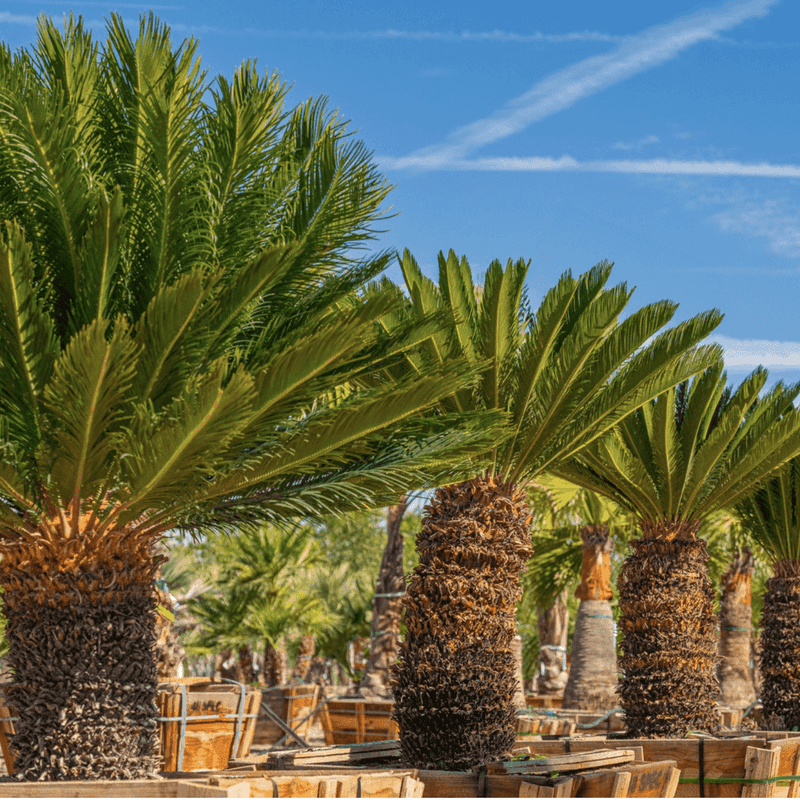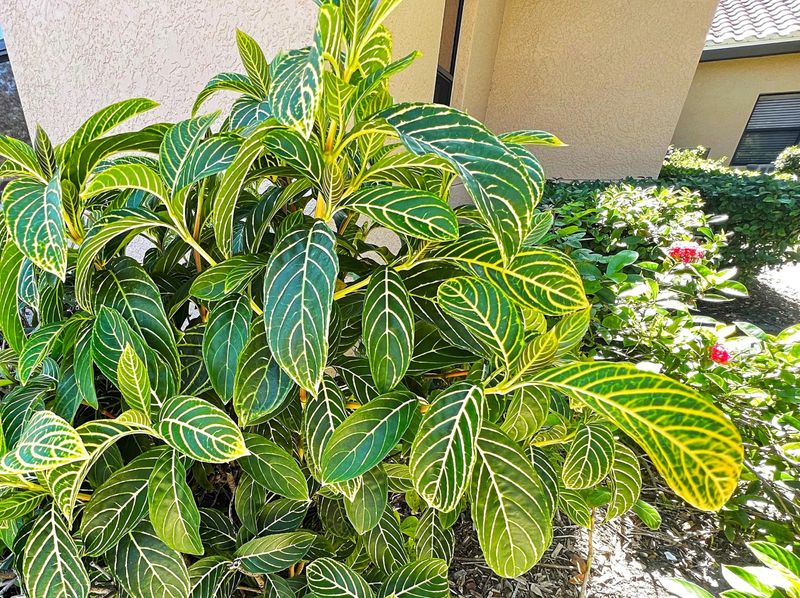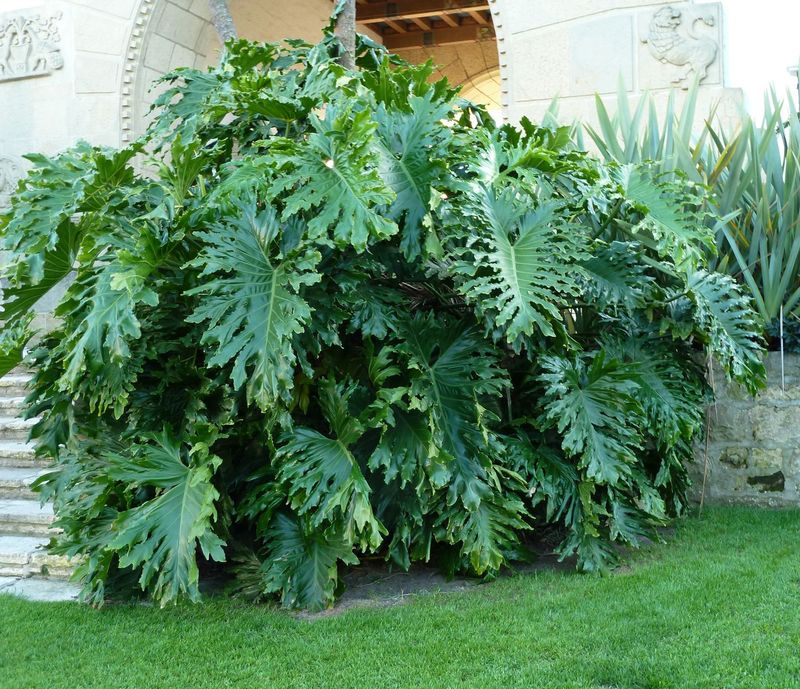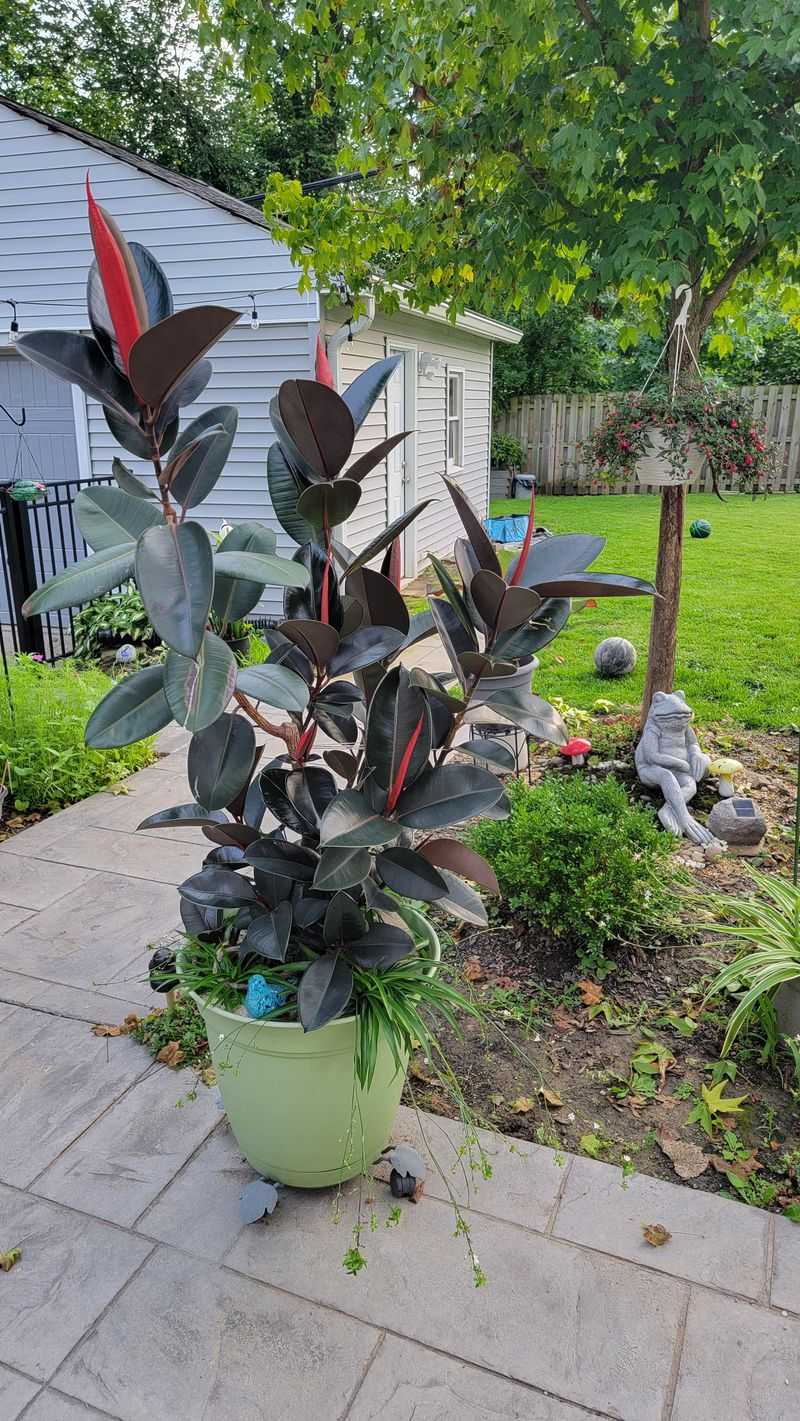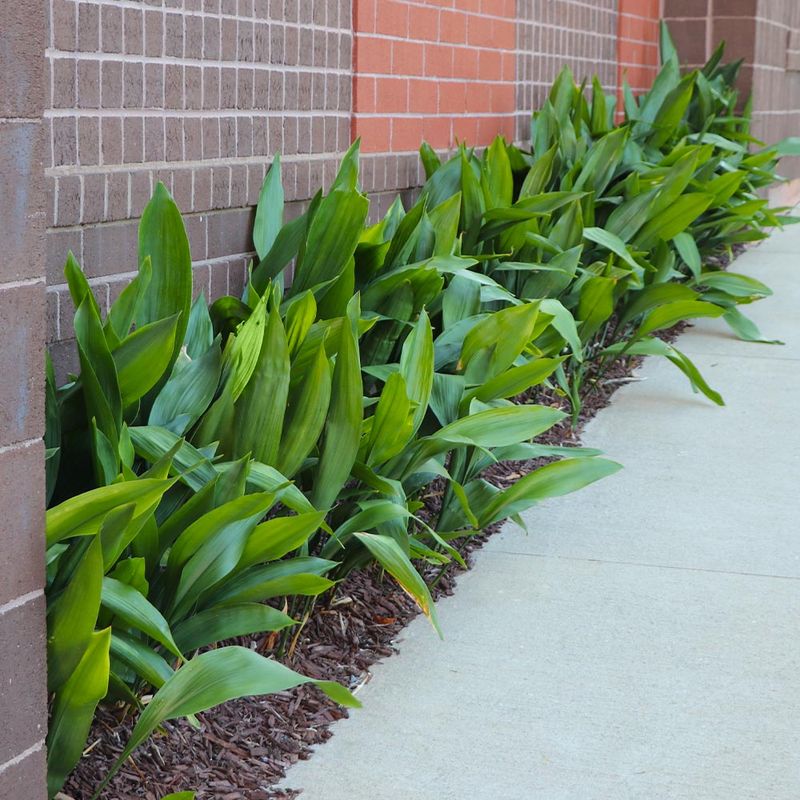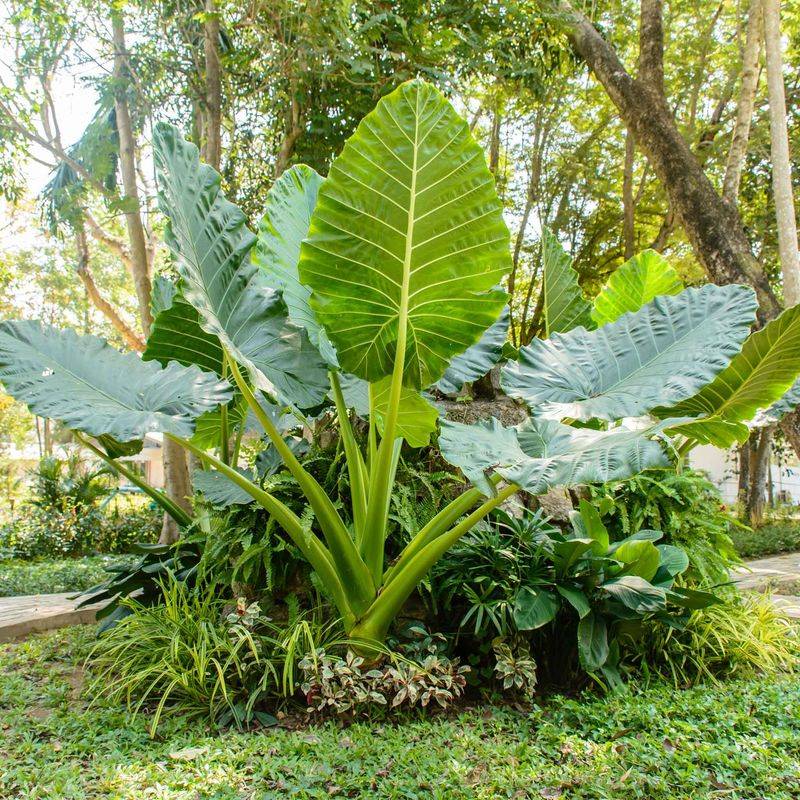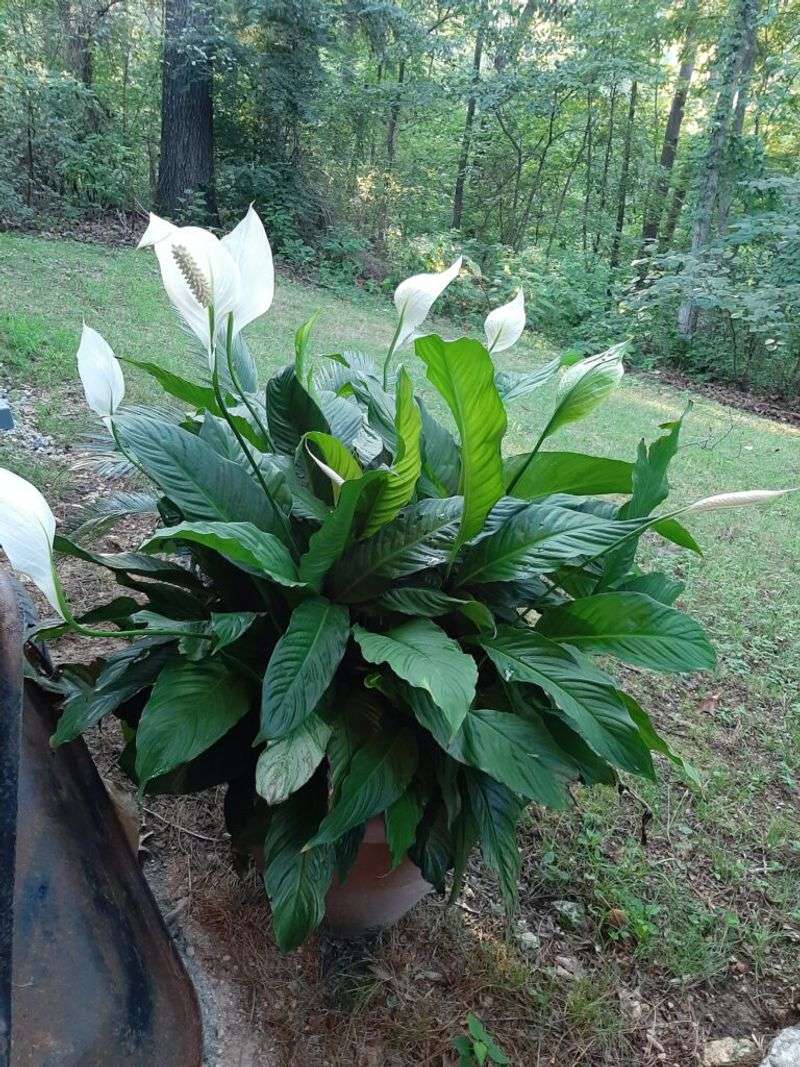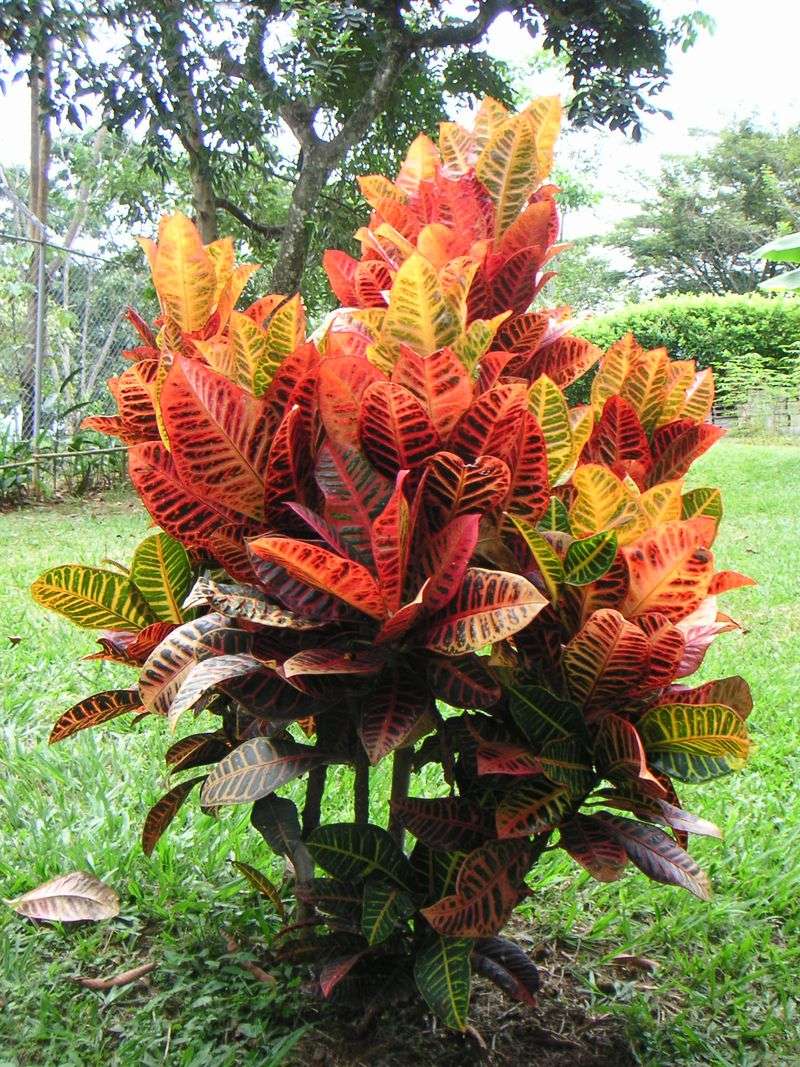Explore an array of vibrant plants that can bring life and color to your garden without relying on traditional flowers.
These selections offer unique foliage, textures, and colors, providing visual interest and variation throughout the seasons. Perfect for gardeners seeking diversity and a touch of the extraordinary, these plants promise to enhance any garden space.
1. Japanese Maple
The Japanese Maple is a captivating plant that offers vibrant foliage without the need for flowers. In autumn, its leaves turn into brilliant shades of red and orange, creating a stunning visual display. This small tree or shrub is ideal for adding a splash of color to any garden.
With its delicate, intricate leaves, the Japanese Maple can elevate the aesthetic of both contemporary and traditional gardens. It’s a deciduous plant, meaning it sheds its leaves in the fall, contributing dynamic seasonal interest. While it thrives best in partial shade, it’s crucial to ensure well-drained soil for optimal growth.
2. Hosta
Hostas are popular for their lush, leafy appearance, rather than flowers. Known for their wide, vibrant leaves in hues of green, blue, and yellow, they can transform garden paths or shady spots into verdant retreats. Hostas are perennial plants, returning each year to grace your garden with their robust foliage.
Easy to grow, they thrive in shaded areas, making them perfect companions for other shade-loving plants. Their texture and color variations add depth. Though they produce flowers, it’s the leaves that steal the show, offering a lush backdrop to any garden setting.
3. Fiddle Leaf Fig
The Fiddle Leaf Fig, beloved for its dramatic foliage, is a favorite among indoor gardeners. Its large, glossy leaves can instantly elevate a room’s atmosphere, providing a lush, tropical feel. While typically grown indoors, it can also thrive outdoors in warm climates.
This plant requires bright, indirect light and prefers a consistent watering schedule to prevent leaf drop. Its towering presence makes it a striking focal point, perfect for minimalistic or modern interiors. Though it’s not known for flowers, its bold leaves are captivating enough on their own.
4. Bamboo
Bamboo is a versatile plant known for its rapid growth and tall, elegant stalks. Its vibrant green color and distinctive form make it a favorite for creating natural screens or adding vertical interest to gardens.
While it can be invasive, proper management and selection of clumping varieties can keep it in check. Bamboo loves sunshine and thrives in well-drained soil. It’s an excellent choice for creating lush, serene spaces, providing both privacy and wind protection. Its rustling leaves also add a calming soundscape to any garden.
5. Snake Plant
The Snake Plant, also known as Mother-in-law’s Tongue, is celebrated for its striking, upright foliage. Its sword-like leaves add a modern touch to any space, making it a popular choice for both indoor and outdoor settings.
This hardy plant is low-maintenance, tolerating low light and infrequent watering, which makes it perfect for beginners or those with busy lifestyles. It’s known for improving air quality, absorbing toxins and releasing oxygen at night.
Though it rarely flowers, its architectural leaves are a statement themselves, providing a sleek and sophisticated appearance.
6. Swiss Cheese Plant
The Swiss Cheese Plant, or Monstera deliciosa, is famous for its unique leaves that have natural holes or splits, resembling Swiss cheese. This tropical plant is a fantastic choice for adding a touch of the jungle to any home.
It thrives in bright, indirect light and appreciates regular watering, though it’s fairly forgiving if slightly neglected. Its leaves can grow exceptionally large, making a bold statement in any room. While it does produce flowers, it’s the leaves that often attract plant enthusiasts, providing an exotic, vibrant look.
7. Aloe Vera
Aloe Vera is not only celebrated for its medicinal properties but also for its striking appearance. Its fleshy, spiky leaves store water, making it an excellent succulent for arid environments or indoor spaces.
The plant thrives in bright, indirect sunlight and is perfect for novice gardeners due to its low maintenance needs. It’s also known for its healing gel, which can soothe skin irritations.
While it may produce tubular flowers under the right conditions, its leaves are what make this plant a staple, offering both aesthetic appeal and practicality.
8. Agave
Agave plants are striking succulents known for their large, spiky leaves arranged in a rosette formation. They’re perfect for xeriscaping or creating dramatic focal points in gardens. These hardy plants thrive in full sun and well-drained soil, requiring minimal water once established.
The architectural form of Agave makes it a standout choice for modern landscapes. Although Agave does flower, it happens infrequently and often results in the plant’s demise. Thus, its bold, sculptural leaves are its main attraction, offering a touch of the desert to any garden.
9. Fern
Ferns are ancient plants, prized for their delicate fronds and lush, green appearance. Perfect for shady or woodland gardens, they add a soft, textured look to any landscape. Ferns thrive in moist, well-drained soil and do best in areas with filtered sunlight.
Their ability to unfurl new fronds throughout the growing season keeps gardens looking fresh and vibrant. Although they don’t produce traditional flowers, their intricate leaf patterns and rich green hues make them a favorite among gardeners seeking elegance and texture.
10. Spider Plant
The Spider Plant is a beloved houseplant, known for its arching leaves and the baby plantlets it produces, which can hang beautifully from the parent plant. It’s perfect for hanging baskets or high shelves.
This plant is incredibly easy to care for, requiring bright, indirect light and occasional watering. It grows rapidly and can withstand a variety of conditions, making it ideal for novice gardeners.
While it doesn’t offer flowers, the dynamic foliage and ease of propagation are what make the Spider Plant a charming addition to any home.
11. Ivy
Ivy is a classic climbing plant, known for its glossy, evergreen leaves and ability to cover structures with ease. It’s an excellent choice for creating living walls or adding greenery to fences and trellises.
Ivy thrives in both sun and shade, making it versatile for various garden settings. It’s also highly adaptable and can grow in various soil types. While it can produce small flowers, the main appeal of ivy lies in its lush foliage and ability to transform vertical spaces into natural artworks.
12. Caladium
Caladiums are known for their stunning, heart-shaped leaves that come in a variety of vibrant colors and patterns. They can instantly add a tropical vibe to shaded garden spots. These plants prefer indirect light and well-drained soil, thriving best in humid conditions.
Their colorful foliage provides a striking contrast against green backdrops, making them excellent for borders or container gardens. Though they’re not celebrated for flowers, their leaves are often considered artworks of nature, with intricate designs and bold hues.
13. Palm
Palms are iconic for their tall trunks and graceful, arching fronds, bringing a tropical feel to any garden. They are well-suited to warm climates and can serve as focal points or background plants. Most palms thrive in full sun and well-drained soil, although some species are adaptable to different conditions.
They are perfect for adding height and structure to tropical-themed gardens. While palms can produce flowers, their leaves and overall stature are the primary attractions, offering an exotic touch to any landscape.
14. Zebra Plant
The Zebra Plant is admired for its striking foliage, featuring bright, bold stripes that resemble the pattern of a zebra. It’s a popular choice for indoor gardens. This plant requires consistent moisture and bright, indirect light to thrive, making it slightly demanding but rewarding.
Its dramatic appearance is perfect for adding visual interest to home interiors. Though it may produce yellow flowers, it’s the eye-catching leaves that make the Zebra Plant a standout, offering a piece of the exotic indoors.
15. Philodendron
Philodendrons are versatile plants known for their lush, trailing leaves that can create an indoor jungle effect. Perfect for hanging planters or allowing to climb, they bring a touch of the wild into homes.
They thrive in low to medium light and require consistent watering to keep their leaves lush and vibrant. Their ability to purify air adds to their appeal. While they can flower, the main attraction of Philodendrons is their foliage, providing texture and greenery throughout the year.
16. Rubber Plant
The Rubber Plant is a striking indoor plant known for its broad, glossy leaves that add a touch of elegance to any space. It’s a favorite for bringing greenery into homes or offices. It thrives in bright, indirect light and requires moderate watering.
Its robust nature makes it forgiving to occasional neglect, perfect for busy plant owners. While it rarely flowers indoors, the Rubber Plant’s lush foliage is reason enough to include it in any plant collection, providing a sophisticated, tropical vibe.
17. Cast Iron Plant
The Cast Iron Plant is renowned for its resilience, thriving in conditions that challenge most others. Its glossy, dark green leaves create a lush, tropical feel in gardens or indoor spaces. It’s incredibly low-maintenance, tolerating low light and infrequent watering, making it an ideal choice for those with less time for plant care.
This plant is perfect for shaded garden areas. Though it rarely flowers, the Cast Iron Plant’s foliage remains its true appeal, offering a steadfast green presence regardless of conditions.
18. Elephant Ear
Elephant Ear plants are famous for their enormous, heart-shaped leaves that resemble elephant ears, providing a bold, dramatic element to gardens. These plants prefer warm climates and thrive in partial shade, needing consistently moist soil to reach their full potential.
Their impressive size makes them a striking choice for creating lush, tropical backdrops. While they can produce flowers, it’s the sheer size and shape of the leaves that draw attention, offering a touch of the extraordinary to any planting scheme.
19. Peace Lily
The Peace Lily is a graceful plant known for its lush foliage and ability to purify air, making it a favorite for indoor environments. Its dark green leaves create a verdant base, while its white spathes add elegance.
It thrives in low to medium light and requires regular watering to maintain its vibrant appearance. The Peace Lily is forgiving of neglect, resiliently bouncing back after drought. While its blooms resemble flowers, it’s largely admired for its foliage, which offers a soothing, calming presence in any room.
20. Croton
Croton plants are celebrated for their bold, colorful foliage, featuring a mix of yellow, orange, red, and green. They can instantly brighten up any garden or indoor space. These plants require bright light to maintain their vibrant leaf colors and thrive best in warm, humid conditions.
Regular watering is essential to keep their leaves lush and healthy. Though they do flower, the main attraction of Crotons is their spectacular foliage, offering a burst of color and life to any setting.
